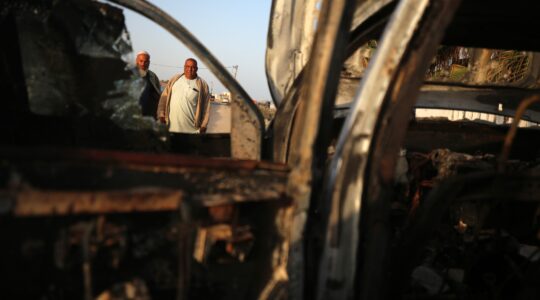ROME, Sept. 10 (JTA) Synagogues in England and in seven countries of Eastern and Central Europe will receive a total of $140,000 from the World Monuments Fund as part of a preservation program.
The synagogues that will receive the grants, announced Monday, include the biggest Sephardic synagogue in the Balkans, a Baroque synagogue in Hungary and a ruined synagogue complex in Lithuania.
The grants will be awarded through the New York-based organization’s Jewish Heritage Program and the Ronald S. Lauder Foundation, which last year made a five-year, $500,000 commitment to such projects. Additional funding came from private donors.
The 2001 grantees include:
The Central Synagogue in Sofia, Bulgaria, built in 1906. It is one of the largest and most significant Sephardic synagogues in Europe.
The 19th-century Prince’s Road Synagogue in Liverpool, England. An active Orthodox synagogue, it is one of the few remaining examples in Britain of Victorian Moorish architecture.
The synagogue in Carpentras, France. Built in 1374, it is one of the oldest synagogues in Europe. It has been in continuous use as a Jewish house of worship since its construction, but restoration work has been stalled due to lack of funding.
The 18th-century synagogue in Mad, Hungary. It is one of the oldest synagogues in Hungary, although little maintenance has been conducted since 1979.
The only surviving synagogue in Lviv, Ukraine, built in 1924 and today the center of an active outreach program to the Jewish community.
The Choral Synagogue in Kiev, Ukraine, built in 1896. It was the center of Jewish life in Kiev until it was seized by the Soviets in 1926; it is now a functioning synagogue.
This was the second year that the Jewish Heritage Program made such grants.
This year’s recipients were selected from proposals submitted by nongovernmental organizations, Jewish communities and others interested in the preservation of Jewish cultural heritage.
Projects were chosen on the basis of significance, viability, urgency of the need for intervention and the presence of a responsible local community or authority to oversee conservation work and ongoing maintenance.
Some localities have already pledged matching funds for this year’s grant recipients.





